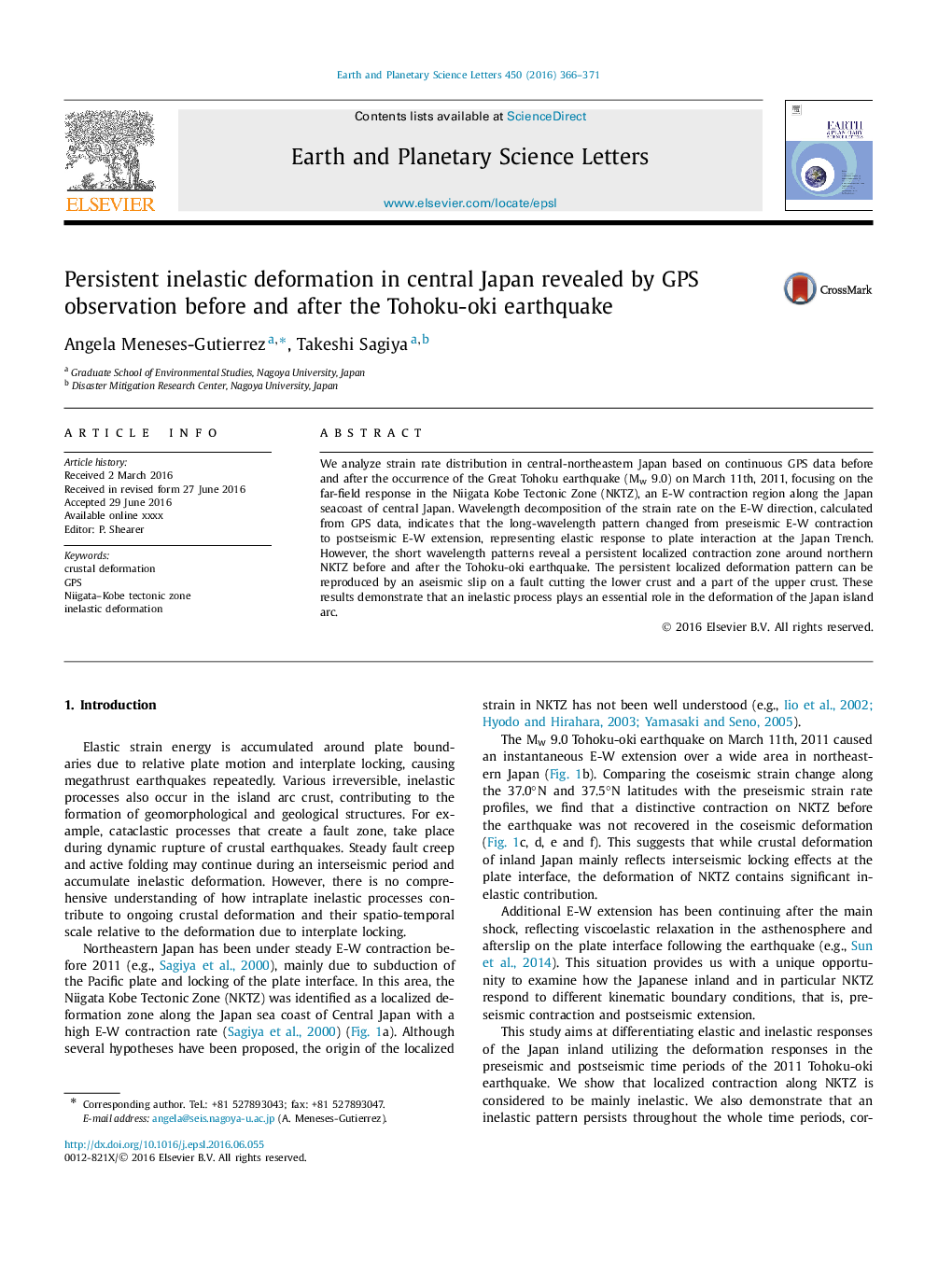| Article ID | Journal | Published Year | Pages | File Type |
|---|---|---|---|---|
| 6427316 | Earth and Planetary Science Letters | 2016 | 6 Pages |
Abstract
We analyze strain rate distribution in central-northeastern Japan based on continuous GPS data before and after the occurrence of the Great Tohoku earthquake (Mw9.0) on March 11th, 2011, focusing on the far-field response in the Niigata Kobe Tectonic Zone (NKTZ), an E-W contraction region along the Japan seacoast of central Japan. Wavelength decomposition of the strain rate on the E-W direction, calculated from GPS data, indicates that the long-wavelength pattern changed from preseismic E-W contraction to postseismic E-W extension, representing elastic response to plate interaction at the Japan Trench. However, the short wavelength patterns reveal a persistent localized contraction zone around northern NKTZ before and after the Tohoku-oki earthquake. The persistent localized deformation pattern can be reproduced by an aseismic slip on a fault cutting the lower crust and a part of the upper crust. These results demonstrate that an inelastic process plays an essential role in the deformation of the Japan island arc.
Related Topics
Physical Sciences and Engineering
Earth and Planetary Sciences
Earth and Planetary Sciences (General)
Authors
Angela Meneses-Gutierrez, Takeshi Sagiya,
